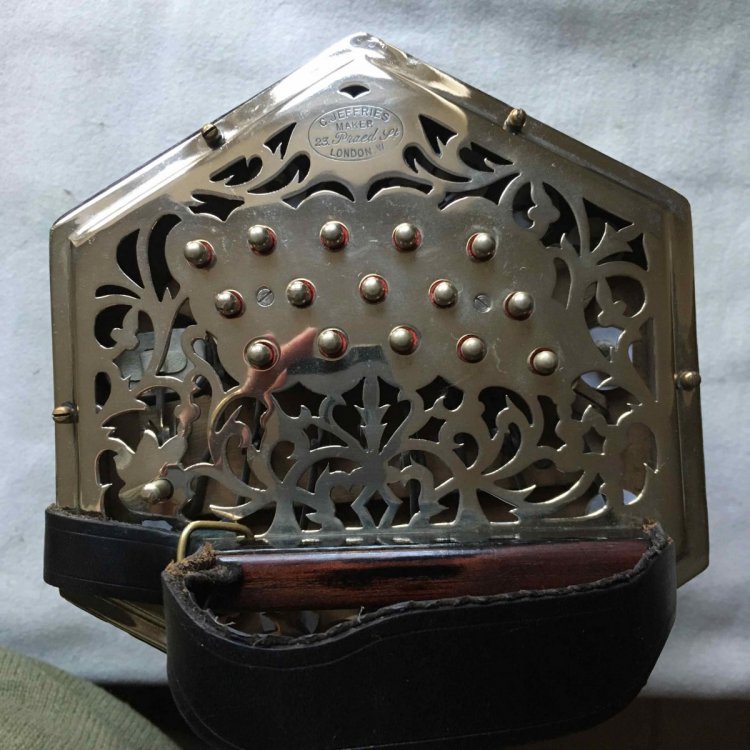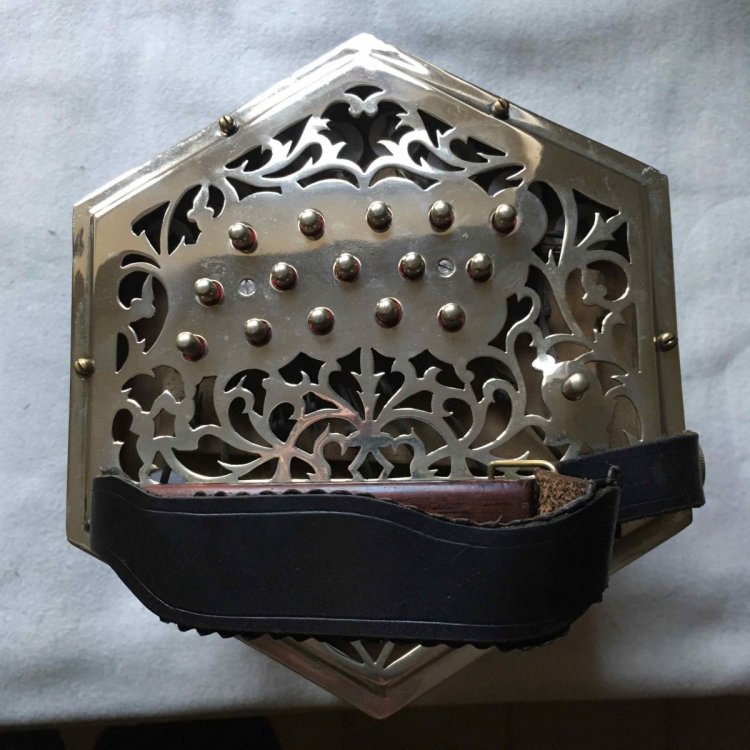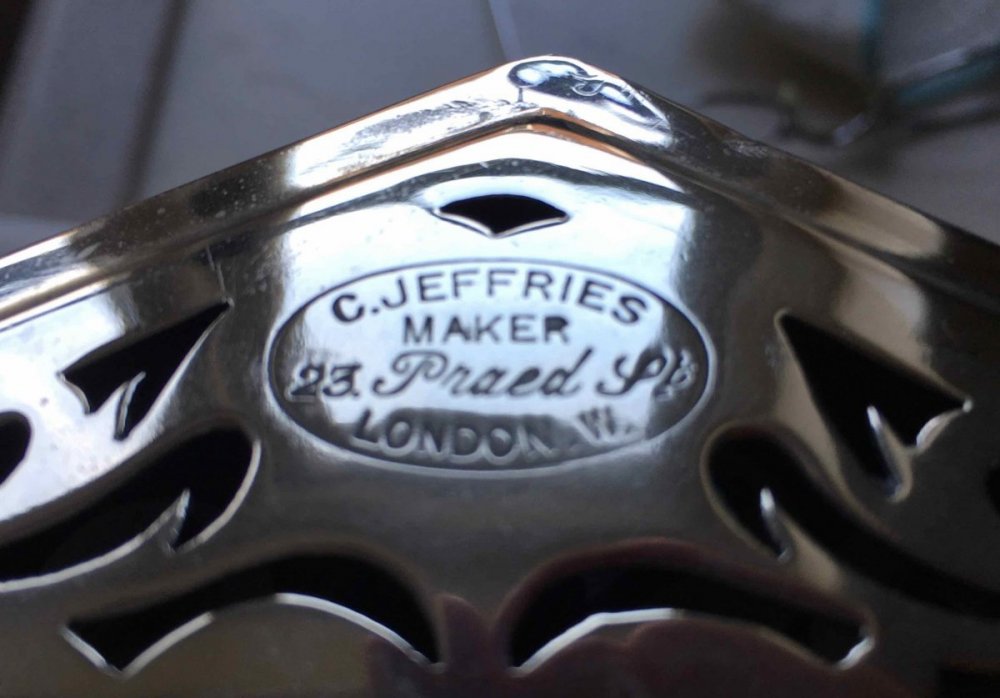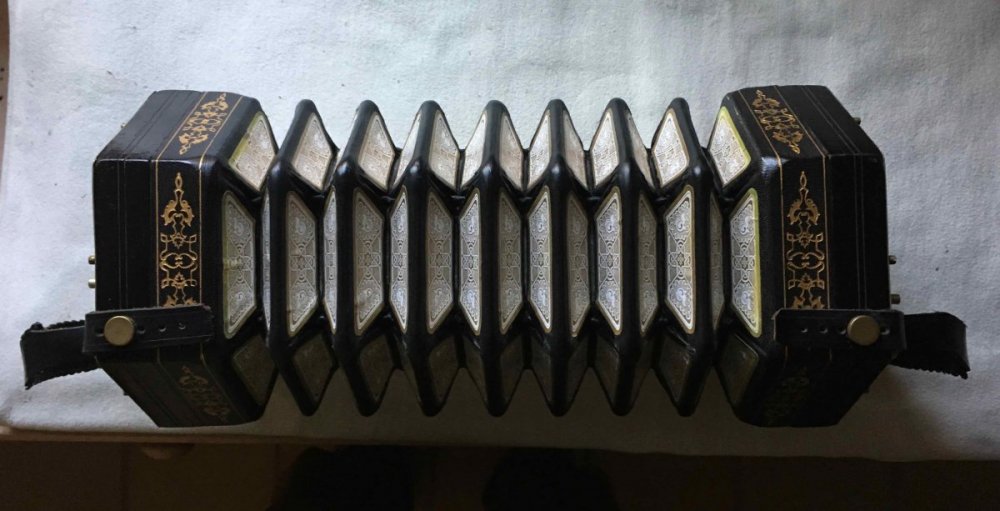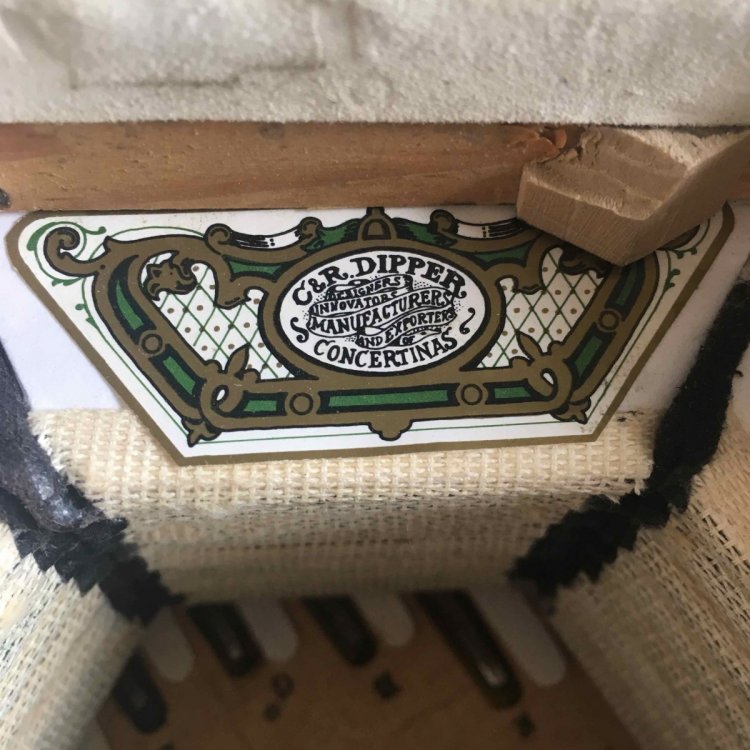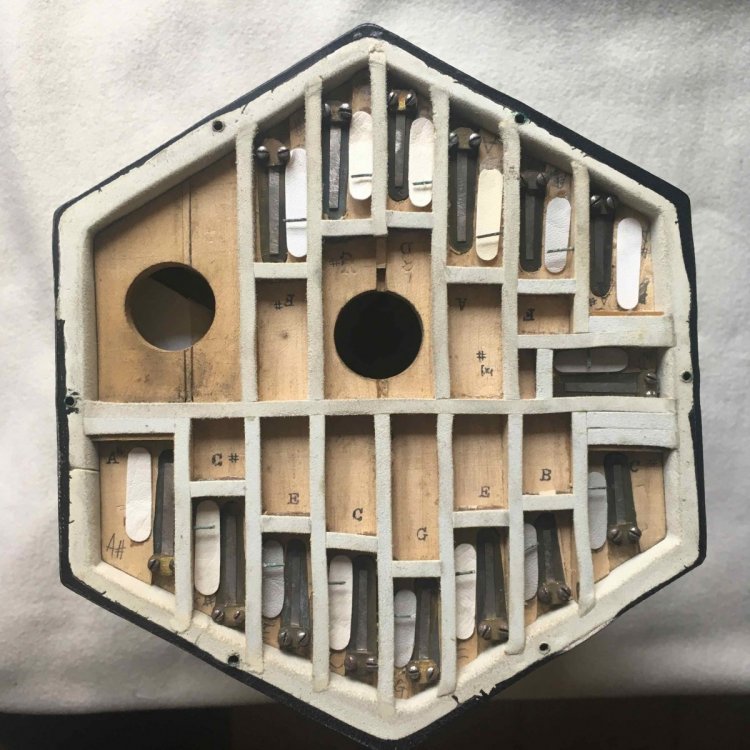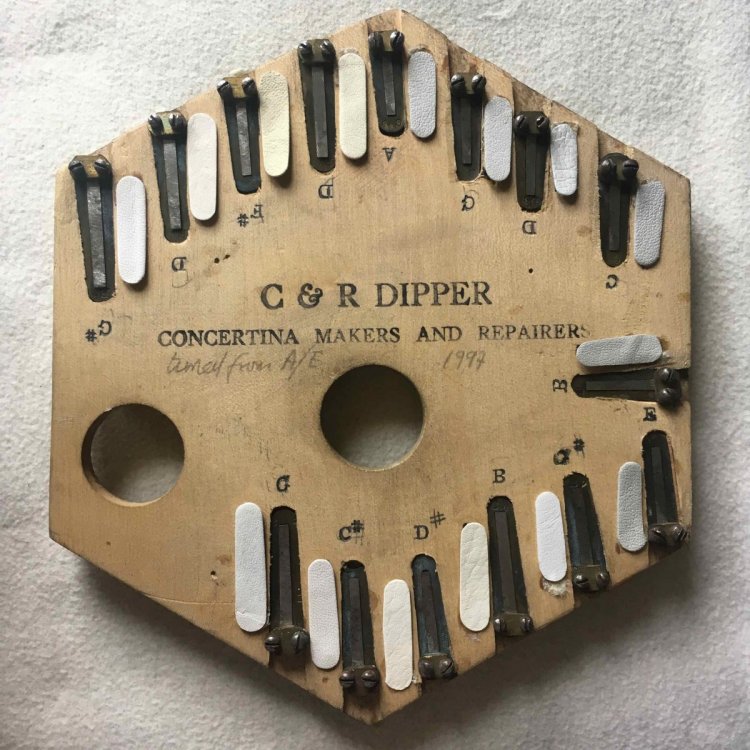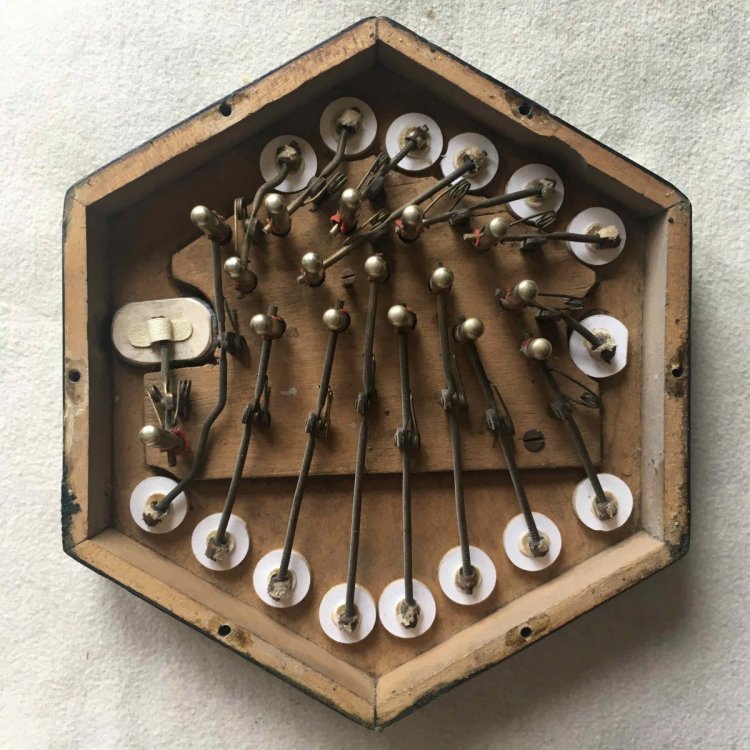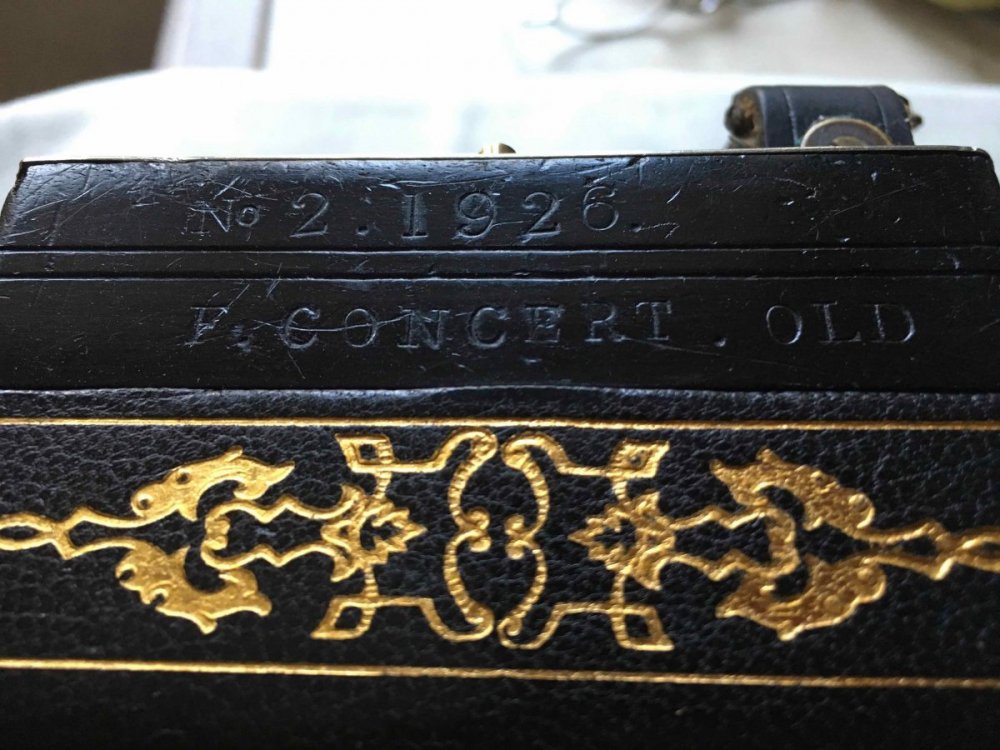-
Posts
556 -
Joined
-
Last visited
Everything posted by Little John
-
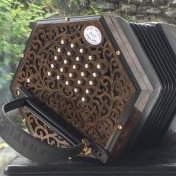
Whatever Happened To Duet International ?
Little John replied to Irene S.'s topic in General Concertina Discussion
If you're really starving, you'll find quite a few of my efforts here. LJ -
I play with the instrument hanging down. Straps fairly loose the same as when I'm sitting. This was originally recorded to illustrate the shape of the bellows in response to a question, but it serves equally to demonstrate the overall hold on the concertina. Much more comfortable than with forearms horizontal or upright. The only downside is that it can be hard to hear yourself if you're surrounded by melodeons! LJ
-

My experience with 1/5 comma mean tone tuning
Little John replied to Little John's topic in General Concertina Discussion
Steve - it's one of those things, feels like a really big step to take but afterwards you wonder why you didn't do it sooner. I can't really see a downside to it - only benefits. I calculated that, for playing in the "English" keys of G and D it is best to centre the tuning on A. That minimises the deviation from ET. Of course, if you habitually play in other keys than these another centre might be preferable. (If it's a C/G concertina and you play mainly in those keys then D is indeed the appropriate centre for tuning.) See my response above to Bax. My Crane is centred on A so I was able to give a true 440 Hz note to the West Gallery instruments to tune to. That said, if my calculation is correct, his A at 2 cents flat translates to only about 0.5 Hz which I doubt would be noticeable. The "beating" between a true 440 Hz A and the concertina's A would have a two second cycle. -
It's about a year since I asked for others' experience with using fifth comma mean tone tuning in another thread. The answers I received were sufficiently encouraging for me to take the plunge and have my 48 key Crabb Crane duet tuned to this temperament. I haven't regretted it for a moment. A brief explanation before I detail my experience. The almost ubiquitous equal temperament (ET) tuning has been understood for centuries, but was shunned in favour of other tuning temperaments until the end of the 19th century and beginning of the 20th century. In its favour, ET eliminates the need to distinguish between, for example, F# and Gb and it makes it possible to play equally well in any key on a piano or other keyboard instrument. Against it is the fact that all keys are equally "out of tune" and, in particular, all major third intervals are sharp by about a seventh of a semitone (14 cents). Fifth comma mean tone is but one of many tuning systems ("temperaments") which aim to overcome this problem of the major thirds, but it does so at a price: only six of the twelve keys sound good, but all of them are equally good. However, for most folk musicians (and others) this is no real hardship - how many of us want to play in C# major or Eb minor, for example? So, I go to collect my newly tuned Crane from Alex Holden and play a tune. It doesn't sound any different. I deliberately play the "wolf fifth" interval G# - Eb. Doesn't sound bad really. I play a B major chord where the third has to be Eb rather than the D# it should be. Not that bad. Despite not sounding much different, the Crabb almost instantly becomes my "go to" instrument. Only gradually do I realise that my initial perception was coloured by a lifetime of accepting the nasty intervals foisted on us by ET. It's not so much that the mean tone tuning sounds sweeter as time progresses, but that going back to ET tuning becomes increasing painful. The sweetness of mean tone tuning became instantly acceptable whilst the harshness of ET became only slowly apparent. I think instinctively my ear knew this, but my brain took a few months to overcome sixty-odd years prior experience. What follows is a bit more detailed, so you might want to give up at this point! In my earlier thread I asked two specific questions: (1) what keys will I be able to play in and (2) how will it sound with other instruments? The answer to the first is down to your choice of accidentals. For most people Bb, C#, F# and G# will be obvious choices, but the Eb / D# choice is a bit more difficult. (This isn't a problem for English concertinas or larger Hayden duets which have space for both.) Since I tend to sing in flat keys I opted for Eb. This choice gives me the major keys of Bb, F, C, G, D & A plus their relative minors G, D, A, E, B & F#. This would be perfectly adequate were it not for one quirk: some forms of music like to employ the major seventh in minor keys, usually in the harmony rather than the melody (giving rise in classical music to the distinction between harmonic and melodic minor scales). So some tunes in E minor want a D#. It occurs only rarely in my playing and there are several ways round the problem when it does occur, so I really haven't found this to be an issue. As to the second question, over the past year I've played extensively in a duo with a guitar and likewise in a duo with a melodeon. I've also played in a jazz context with clarinet, trombone and guitar and spent a very pleasant day with a West Gallery band and choir including a vast assortment of instruments. I have never detected any problem with sounding out of tune; nor has anyone I've played with made any comment. One further observation. As the title of Ross Duffin's fascination book on the subject indicates, the problem with ET is that it ruins harmony. Melody is a different issue. In the jazz context I've played in Eb major and C minor, where I have to employ G# for what should be Ab, but as I've been playing only melody it hasn't been in the least bit noticeable. One further oddity, which I can't really explain. In a new tune I was learning an odd chromatic passage called for a Bb minor chord. Unfortunately the third of that chord has to be C# since I have no Db, but it sounds acceptable. The same is true of F minor with a third of G# (not that I've ever used that chord). So the flattened minor third seems to be more acceptable than the sharp major third in, for example, B major. Perhaps someone else can provide an explanation for that. One final point. My experience relates entirely to fifth comma mean tone tuning, which seems to be a common compromise: the major thirds are much sweeter than in ET but not actually "pure". In quarter comma the major thirds are pure whilst the fifths are narrower and the note pitches diverge more from ET. How much these last two factors matter I don't know. Some advocate sixth comma as less extreme than quarter or fifth; but my experience suggests fifth comma is not an any practical sense extreme. In all cases the six major and six minor keys are equally good, but perhaps in sixth comma the other keys are more acceptable. That might be an issue with, say, baroque keyboard music but not one that would trouble most folk musicians. I am tempted to try a duet tuned to quarter comma mean tone, but to be honest I'm content with fifth comma so I'll probably never get round to it. My new Alex Holden 44 button Crane (due to arrive next month) will be tuned fifth comma mean tone. LJ
-
Thank you Didie. Since this recording I've changed a couple of chords and added an extra bass run in the second part, but essentially it remains simple.
- 18 replies
-
- roslin castle
- hayden duet concertina
-
(and 1 more)
Tagged with:
-
Please note: this is now sold and on its way to a new life in Germany. A donation will be made to this forum. A Jeffries 30 button anglo in G/D. I only realised when I opened it up to take photos that I've had this for 22 years. When I received it the bellows were torn so it was unplayable. It was fully restored by C & R Dipper. Besides the usual things the ends were re-plated and new 7-fold bellows fitted. I played it seriously for a year or two, but then gradually reverted to the Crane duet so it's rarely touched nowadays. The Dipper hand straps show signs of use, but otherwise it's still pretty much in its restored condition. I'm never going to take it up seriously again and besides, I'm waiting for my new Alex Holden Crane so I need the shelf space! It was re-tuned from A/E, as Colin indicates on the inside, but he said at the time it was actually somewhere between A/E and Ab/Eb. That seems odd, but perhaps the "F.CONCERT . OLD" stamped on one side might give a clue. It also states "No 2 . 1926". Anyway, we agreed that since it had to be re-tuned then G/D made most sense. Photographs below, but if you can get to Hampshire you're welcome to try it. I'm looking for £4,200. Buyer chooses courier and insurance at own expense or, even better, collects. Includes hard, non-fitted case. An appropriate donation will made to C.net in the event of a sale from this site. LJ
-
The idea is interesting, but it's perhaps worthy of note that most layouts of this type are horizontal rather than vertical. For example the CBA, Stark and Tona's layout. There's probably a good reason for that. A particular problem I see with this is forming chords on the left hand. Even for a simple triad there will always be two buttons vertically aligned, which is a fingering problem. For a major chord the first two notes are aligned and for a minor chord the second two notes are. This is pretty well avoided on the Crane and Hayden systems. Another problem is the vertical extant, particularly on the right hand. To get the minimum useful compass of two octaves requires a column of seven buttons. An English covers that range in four, whilst a Crane needs only five and a Hayden (I think) about 4 again. These could be some of the reasons why the Wheatstone Double Duet didn't take off. LJ
-
Thanks David. Kind of you to say so. It was actually filmed in landscape but IGTV insisted on discarding 80% of the image from the sides to produce this portrait format. I have seen a couple of IGTV postings that managed to retain the landscape format. I just couldn't see how to do so myself. It seems there are often hidden features that aren't at all obvious. With normal Instagram the default is a square image but it's easy (once someone has told you how!) to retain the original format if you wish. I was using IGTV for the first time because it doesn't have the 60 second limit of IG, which would obviously have made a sensible recording of Roslin Castle impossible. LJ
- 18 replies
-
- roslin castle
- hayden duet concertina
-
(and 1 more)
Tagged with:
-
I've enjoyed listening to all these versions but decided against learning to play it myself. That is, until it kept creeping into my ear so in the end I gave up resisting! It may not add anything to all the previous renditions, but for what it's worth, here is my interpretation. LJ
- 18 replies
-
- 2
-

-
- roslin castle
- hayden duet concertina
-
(and 1 more)
Tagged with:
-

Sighting - William Holman Hunt painting
Little John replied to AndrewCollins's topic in Concertina History
Really interesting! Thanks for giving this link. LJ -

Anglo style bellows for duet
Little John replied to wunks's topic in Instrument Construction & Repair
How do the bellows differ? Why should there need to be different types? LJ -
I have #9155 (48 button Crane) which Geoff told me was 1934. LJ
-

Aluminium for reed frames
Little John replied to Little John's topic in Instrument Construction & Repair
Hi Greg, Thanks for this interesting and informative reply, but I'm not sure it addresses the key question (maybe it's impossible to answer anyway!), and that is: why would Lachenal want to introduce this innovation, and why was it applied to high end models only? If the only consideration was weight saving, why not use aluminium across the whole range; thereby giving them a greater competitive advantage? Was it cost, or difficulty of working the material, that caused them to restrict its use to the most expensive instruments? Or was it to justify the premium price of these instruments? Did contemporary advertisements laud the virtue of aluminium for its light weight; or even for a perceived improvement in tone? And why, as it appears, did they use aluminium extensively on treble and piccolo instruments where the need was least? Very few people nowadays complain of the weight of a brass-reeded treble and I doubt it was different a century ago, so what was the driver behind the innovation? My own experience is far more limited than yours. I have owned a dozen or so concertinas including two aluminium-reeded instruments, one of which has the richest sound I have heard. The richness of the sound was remarked upon by Colin Dipper the moment he heard it. But I don't necessarily ascribe the tone to the aluminium reed frames. Each instrument seems to have a unique tone for no obvious reason. Which still leaves me wondering: what drove the change to aluminium, and did Lachenal (or others) use it for marketing the instruments in any way? LJ -
Roger Bucknall, owner of Fylde Guitars, has recently written: "The 2017 changes to CITES regulations on Rosewood were a shock, not in the overall intention but in the depth to which they apply, needing an export and import license even for a single Rosewood bridge pin, but still only one license for a whole ship full of raw timber. Rather odd and not very effective. Some makers welcomed the changes, I thought they were badly designed and silly at best. I'm probably not the only one, but I thought I had a good relationship with the "authorities" on this, and I wrote some very strong letters to UK and international bodies, including CITES in Geneva. I'm not saying that my complaints made any difference, (perhaps they did?) but the whole issue is being re-examined in May. The new proposal is an exemption for finished musical instruments. We can only hope. I will still be allergic to the stuff even if it is legal." LJ
-
That's my view, too. LJ
-
There seems to be a general perception that aluminium reed frames are inferior to, or somehow less desirable than, brass frames. Why is this? Another recent thread here suggests that many of the best Lachenal and Edeophones had aluminium reed frames (as well as riveted action). The Crabb company also used aluminium extensively, and they are reputed never to have skimped on the quality of their reeds whatever the outside appearance of some of their cheaper concertinas might suggest. Why would Lachenal, apparently, reserve aluminium for their highest quality instruments? Was it because it was more expensive, or more difficult to work with? And what were the benefits - just the weight saving or something to do with sound quality? LJ
-

'Standard' fingerings for Ab, Db, Gb scales on EC?
Little John replied to Aldon Sanders's topic in Teaching and Learning
Hi Pianist - it's perhaps worth mentioning that in the 19th century the English Concertinas would have been tuned in a mean tone temperament, so Db would not be the same as C#. Likewise Ab and G# would be different. The instrument would be limited to the eight keys between three flats and four sharps - enough for most people and not requiring any awkward fingering. I know this is not the answer you're looking for, but most people without your skill and persistence would simply transpose into C or D! LJ -

larger Cranes - variants and techniques
Little John replied to Wolf Molkentin's topic in Instrument Construction & Repair
Looking at it again, what I was suggesting is the lowest of the proposals in your spreadsheet. Unless I'm mistaken, Bb2 is there (in the guise of A#2) and you could replace the G#2 for the more useful F#2 (or, logically, Gb2 as its position would suggest). There isn't really any such concept as a "proper" place for accidentals. Even on the smallest Crane you have D#4 but Eb5 on the right hand side; yet each is likely serve the other purpose at times (i.e. Eb4 and D#5 respectively). Most of all, though, I note Geoff Crabb's comment on the thread to which you give the link: "The 80 button Crabb 'Crane' instrument can be considered as impractical due to the physical length of the keyboards. There existence, as usual, was due to customer requests and few were made. The more practical McCann/Wheatstone 81 was the choice of most." It makes me wonder at the value of the whole exercise of converting a practical Maccann to an impractical Crane. -

larger Cranes - variants and techniques
Little John replied to Wolf Molkentin's topic in Instrument Construction & Repair
Why not just cary the natural sequence downward, ending with C2 alone in the middle column (beneath F2)? LJ -

old pitch and temperament - again
Little John replied to Wolf Molkentin's topic in Instrument Construction & Repair
I don't think there's need to refer to two, and it only adds confusion. The first (your "pitch centre") is the note you choose to be perfectly in tune with an ET instrument. As I've said before, if you play mainly in G and D then a pitch centre of A minimises the deviation from ET. Conveniently , it still allows you to give other instruments a true 440Hz A for tuning. But if you play mainly on other keys another note would be better. The second (your "tempering base") seems to be just an indirect (and not universally agreed) way of indicating where the wolf interval lies. Why not just refer to the wolf interval directly? Clearly? It depends on your favoured keys. The wolf at G#/Eb allows you to play in keys from 2 flats to 3 sharps (3 flats and 4 sharps on an English). But a Peacock Hayden duet, for example, has 1 flat and 4 sharps so G#/Eb would not be the best choice: D#/Bb would be more appropriate. Indeed many players more interested in the sharp keys than the flat keys might prefer the wolf at D#/Bb. LJ- 34 replies
-
- george case
- quarter conma
-
(and 1 more)
Tagged with:
-
Congratulations to @alex_holden and @RAc on this achievement! In producing a small-sized but high-quality Crane they have filled a gap in the market that has existed, as far as I can see, since the Butterworth patent of 1896. Appropriate, then, that it should be announced in the history section of this forum. Whatever the expectations of the early makers, the range of notes on this instrument is pretty well ideal for those of us whose main interest is in traditional tunes and songs. On the RHS the two octaves C4 - C6 cover the vast majority of old tunes* and the additional B3 is useful for a handful of modern tunes and transpositions. On the LHS the octave-and-a-half C3 - G4 allows the player to form any standard chord he/she might want, as well as to play counter-melodies. In addition the light weight is perfect for those who prefer to sing or play standing (e.g. in a folk club) or who have no choice but to stand (e.g. playing for Morris dancing). I'm greatly looking forward to receiving alex's #4 in a couple of months' time! LJ *A while ago I flicked through the first 60 tunes in one of Dave Townsend's books and the first 60 in Playford's Dancing Master. Every single one of those 120 tunes fitted in this two-octave range.
-

A tune what I wrote: Bright Winter's Morning
Little John replied to Mikefule's topic in Tunes /Songs
Be careful here! In Morris dancing a "jig" refers to a solo dance, not to the time signature. It's as likely to be in 4/4 as in 6/8. LJ -

old pitch and temperament - again
Little John replied to Wolf Molkentin's topic in Instrument Construction & Repair
I'm afraid this just muddies things. 1. The reason for choosing a particular starting (centre) note is to minimise the deviation from other instruments playing in equal temperament (ET). As it happens, A is the best starting note if you play mainly in the "folk" keys of G and D. 2. Whether you choose 1/4, 1/5, 1/6 comma or any other mean tone tuning (other than 1/12 comma, which is ET) you are limited to six* keys; usually ranging from two flats to three sharps. Those six* keys will all sound equally good. (*Eight keys on an English concertina with its additional accidentals.) 3. All temperaments are a compromise. 1/4 comma gives pure major thirds but narrow fifths; 1/12 comma (= ET) gives almost perfect fifths but horribly wide major thirds. In between you trade one off against the other. 1/5 comma is a good choice because it gives decent major thirds at the same time as acceptable deviation from ET instruments.- 34 replies
-
- george case
- quarter conma
-
(and 1 more)
Tagged with:
-

old pitch and temperament - again
Little John replied to Wolf Molkentin's topic in Instrument Construction & Repair
The answer is yes, though I'm not sure whether it's a result of "beating" or just the brain's interpretation. If I sound two high notes a fourth apart on either my ET or my 1/5 comma Cranes I can hear a note two octaves below the higher note. This is consistent with interpreting the two notes as the 2nd and 3rd overtones of the perceived fundamental. Likewise on my 1/5 comma instrument two high notes a major third apart produce the perception of a fundamental two octaves below the lower note; consistent with interpreting them as the 3rd and 4th overtones. I do not get this effect on my ET instrument; presumably as the major third is so far from pure. LJ- 34 replies
-
- george case
- quarter conma
-
(and 1 more)
Tagged with:
-
Jim - out of interest I followed your link to the patent. Am I right in thinking that the button numbered 1 on the RHS has the bellows directions shown wrongly? Or is there some cunning advantage to it that I haven't spotted? LJ



